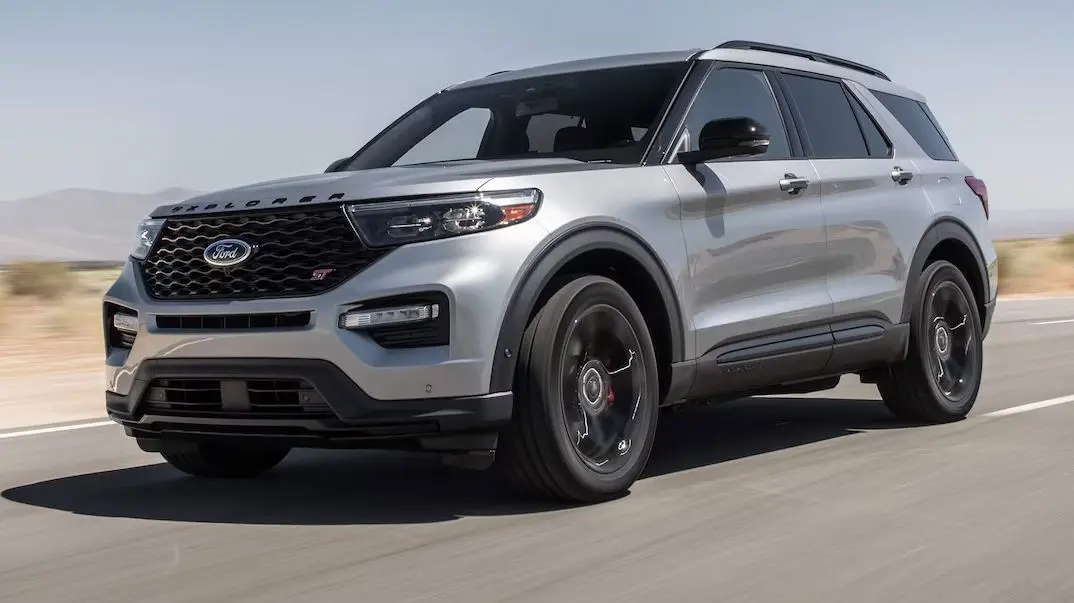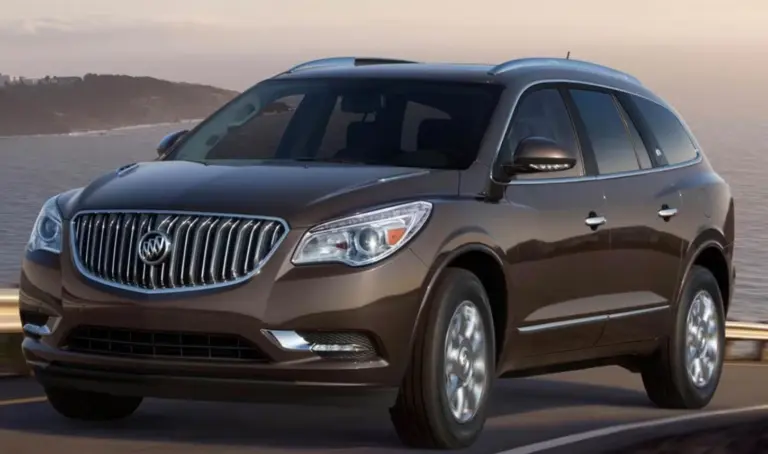Ford Explorer Years to Avoid (Updated)
Buying a used Ford Explorer can be a smart decision, but knowing which years to avoid is critical. Some models have a history of recurring problems, leading to expensive repairs and safety concerns. You don’t want to spend more time and money fixing issues than enjoying your vehicle.
Understanding why certain years are problematic will help you avoid unnecessary headaches. By staying informed, you can identify models worth considering and those best avoided. Let’s uncover what makes these particular model years problematic and how to spot potential issues.
Ford Explorer Years to Avoid
| Model Year | Key Issues |
|---|---|
| 2002 | Transmission failures, cracked rear panel, paint corrosion |
| 2003 | Suspension issues, drivetrain problems, poor build quality |
| 2004 | Frequent transmission breakdowns, body integrity issues, engine overheating |
| 2005 | Electrical system failures, suspension wear, power steering concerns |
| 2006 | Transmission and differential failures, rusting body panels |
| 2011 | Power steering malfunctions, electrical system glitches, fuel efficiency issues |
| 2012 | Transmission slipping, faulty air conditioning system, premature brake wear |
| 2013 | Engine cooling problems, electrical shorts, suspension issues |
| 2016 | Exhaust fumes in the cabin, brake system failures, navigation system glitches |
| 2017 | Premature tire wear, suspension deterioration, powertrain problems |
| 2020 | Transmission failures, brake malfunctions, poor interior build quality |
2002-2006 Models
The early 2000s Ford Explorer models are widely regarded as some of the most problematic in the vehicle’s history. Transmission issues are the main reason these years are frequently avoided by buyers. Hard shifting, slipping out of gear, and complete transmission failures were common complaints, often occurring before the 100,000-mile mark. These problems made driving unsafe and resulted in costly repair bills.
Body integrity also posed issues, particularly with cracked rear panels and peeling paint. Many owners reported cracks forming in the rear panel just below the rear window. While this may seem cosmetic, it lowered the car’s resale value and added unnecessary repair costs. Paint corrosion and fading were also widespread, further impacting the vehicle’s appearance and durability.
Suspension problems were another red flag during this period. Complaints about worn-out ball joints and tie rods were frequent, causing steering and alignment issues. Fixing these problems was expensive, adding to the list of reasons to steer clear of these models.
2011-2017 Models
The second-generation models, particularly those produced between 2011 and 2017, are also known for significant issues. Power steering failures stood out as a major safety concern. Owners of the 2011 model frequently reported losing steering control, which sometimes required complete system replacements.
Another recurring issue during this time was exhaust fumes entering the cabin. Complaints from 2016 owners highlighted a strong odor of exhaust while driving, raising health and safety concerns. Fixing this problem was challenging and often required sealing leaks and reworking the exhaust system.
Premature tire wear became evident in later years, particularly in the 2017 model. Many vehicles required tire replacement under 25,000 miles, which is far below the industry standard. The increased maintenance costs and potential for uneven tire wear discouraged buyers from considering these models.
2020 Model
The 2020 Ford Explorer, despite its modern features and redesign, faced significant reliability issues that left many owners disappointed. Among the most reported problems were transmission and brake system failures. Transmission issues included erratic shifting, hesitation, and, in some cases, complete failure. These malfunctions occurred early, often within the first few thousand miles, causing frustration for new owners.
Brake-related problems were another recurring complaint. Owners reported excessive noise, vibrations, and inconsistent stopping power, which raised safety concerns. These issues led to recalls, forcing many drivers to seek immediate repairs. Such early failures tarnished the vehicle’s reputation despite its promising design improvements.
Interior complaints also emerged, particularly regarding poor-quality materials and subpar craftsmanship. Loose panels, rattling noises, and premature wear on seats and trim were widely reported. For a modern SUV positioned as a premium option, these flaws significantly diminished the ownership experience.
Technology glitches further added to the list of problems. Infotainment systems often froze, failed to connect to devices, or rebooted unexpectedly. While software updates resolved some of these issues, others persisted, leaving many drivers frustrated.
Common Issues Across These Model Years
Several issues have consistently plagued the problematic years of the Ford Explorer. Understanding these recurring problems can help you identify red flags and avoid unnecessary expenses. Let’s break down the most commonly reported problems.
Transmission Failures
Transmission failures remain one of the most persistent and costly issues with Ford Explorers from problematic years. Hard shifting, delays in gear engagement, and complete breakdowns were frequently reported. These issues made vehicles unreliable and dangerous, especially during highway driving. Repairs for transmission failures often exceeded several thousand dollars, making them a significant financial burden for owners.
In some cases, early warning signs like slipping gears or grinding noises were ignored, leading to complete system failure. Models from 2002-2004 were especially notorious for these problems. Unfortunately, even well-maintained vehicles experienced these issues, making them less attractive on the used market.
Body and Paint Problems
Body integrity was another weak point, particularly for the early 2000s models. Owners complained about cracked rear panels below the window, a defect that often appeared without any external damage. Although primarily cosmetic, the cracks hurt the vehicle’s resale value and created an unsightly appearance.
Paint peeling and corrosion were also prevalent, with many vehicles showing signs of rust after just a few years. These issues were especially common in regions with harsh weather conditions, where road salt exacerbated the problem.
Power Steering Failures
Power steering issues were widespread, particularly in the 2011 model. Sudden loss of steering control posed serious safety risks, especially at higher speeds.
Repairing or replacing the power steering system was both expensive and time-consuming, leaving many owners frustrated. These problems led to recalls, yet they persisted for some vehicles even after repairs.
Exhaust Fumes and Cabin Odors
Exhaust fumes leaking into the cabin were a major concern in models like the 2016 Explorer. This issue created an unpleasant and unsafe driving experience.
Prolonged exposure to exhaust fumes raised health concerns, prompting many owners to seek costly repairs or replacements for the exhaust system. Unfortunately, resolving this problem was not always straightforward, leading to repeated visits to mechanics.
Premature Wear and Tear
Several models, particularly those from 2017, exhibited rapid tire wear and suspension deterioration. Owners reported uneven tire wear after just a few thousand miles, often requiring replacements far sooner than expected.
Suspension issues, such as worn-out ball joints and tie rods, further compounded these problems, leading to alignment issues and increased repair costs.
Frequently Asked Questions (F.A.Q)
Which Ford Explorer years are considered the most problematic?
The most problematic Ford Explorer years include 2002-2006, 2011-2017, and the 2020 model. These years have a history of serious issues, such as transmission failures, power steering malfunctions, and premature wear and tear. The 2002 and 2004 models are especially known for frequent and costly transmission breakdowns, while the 2011 model is notorious for power steering failures that posed safety risks.
What are the most common problems with these models?
Common issues include transmission failures, body integrity problems, and power steering malfunctions. The early 2000s models often experienced cracked rear panels and peeling paint, while later years like 2016 had exhaust fumes leaking into the cabin. Additionally, many owners reported suspension issues and premature tire wear, especially in the 2017 model.
Are there any reliable Ford Explorer years?
Yes, models like 2007-2010 and 2018-2019 are generally more reliable. These years have fewer complaints and better performance records compared to the problematic ones. However, it’s still crucial to inspect the vehicle thoroughly and check its maintenance history before purchasing.
What should I check when buying a used Ford Explorer?
When buying a used Ford Explorer, inspect the transmission, power steering system, and suspension components carefully. Look for signs of body damage, including cracks in the rear panel and paint corrosion. A professional inspection or vehicle history report can help you identify hidden problems and avoid costly repairs.
How can I avoid buying a problematic model?
Research is key. Check forums, reviews, and reliability reports for the specific year you’re considering. Always test drive the vehicle and have it inspected by a trusted mechanic. Avoid models with high mileage or incomplete maintenance records.
Wrapping Up
Choosing the right Ford Explorer model can make all the difference between a rewarding ownership experience and constant frustration. While the Ford Explorer remains a popular choice among SUVs, certain model years have demonstrated recurring issues that prospective buyers should avoid. Models from 2002-2006, 2011-2017, and 2020 have faced significant reliability problems, including transmission failures, power steering malfunctions, and body integrity issues.
| Read Also |







